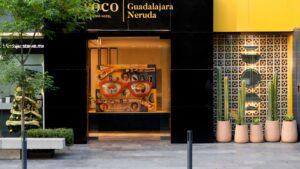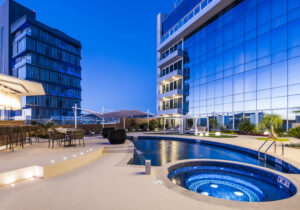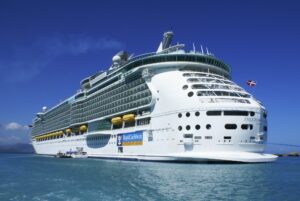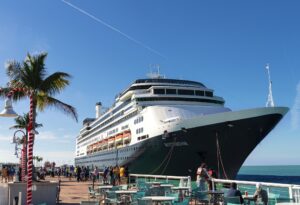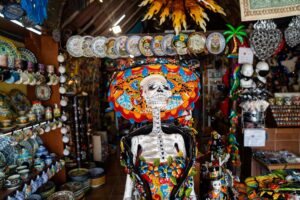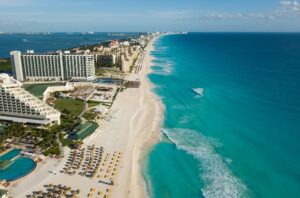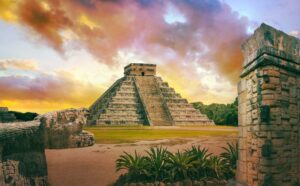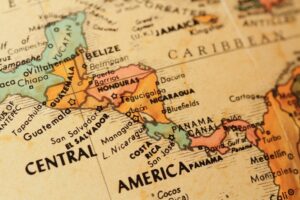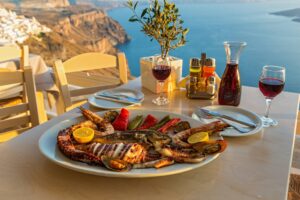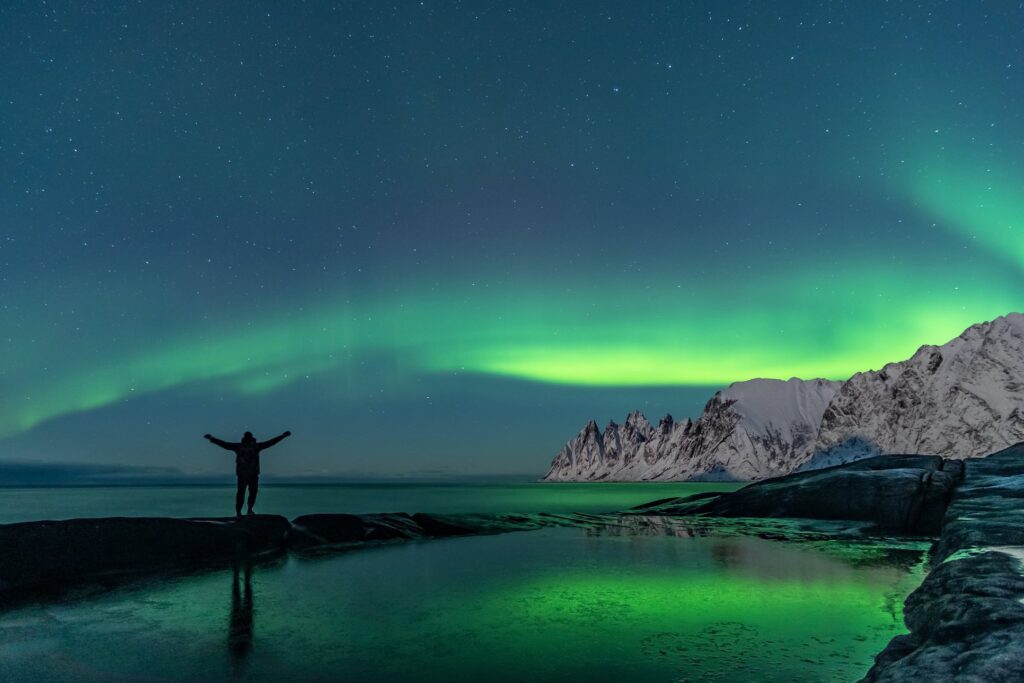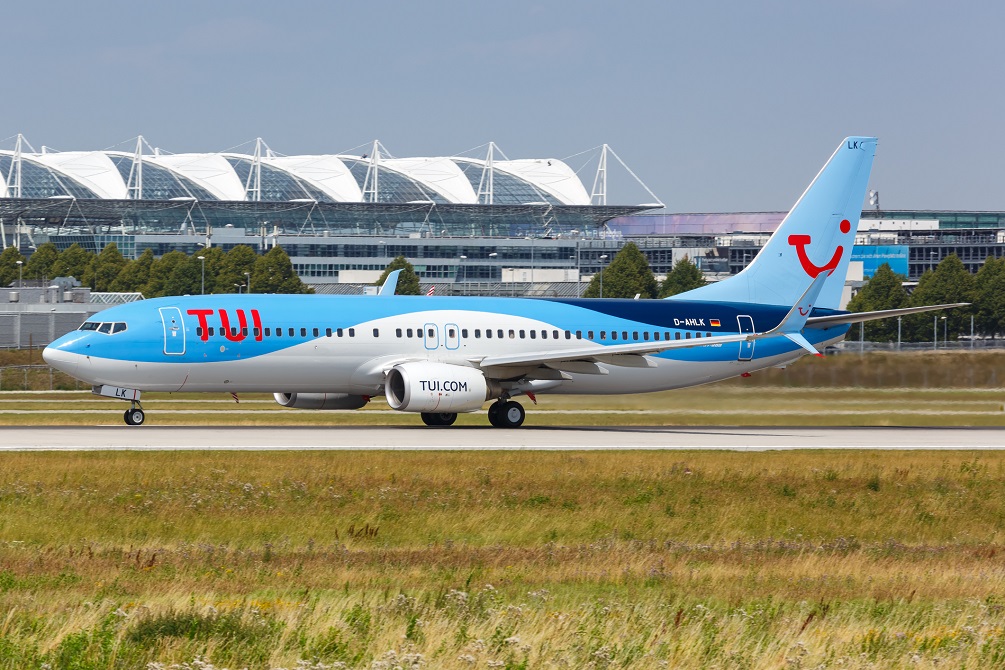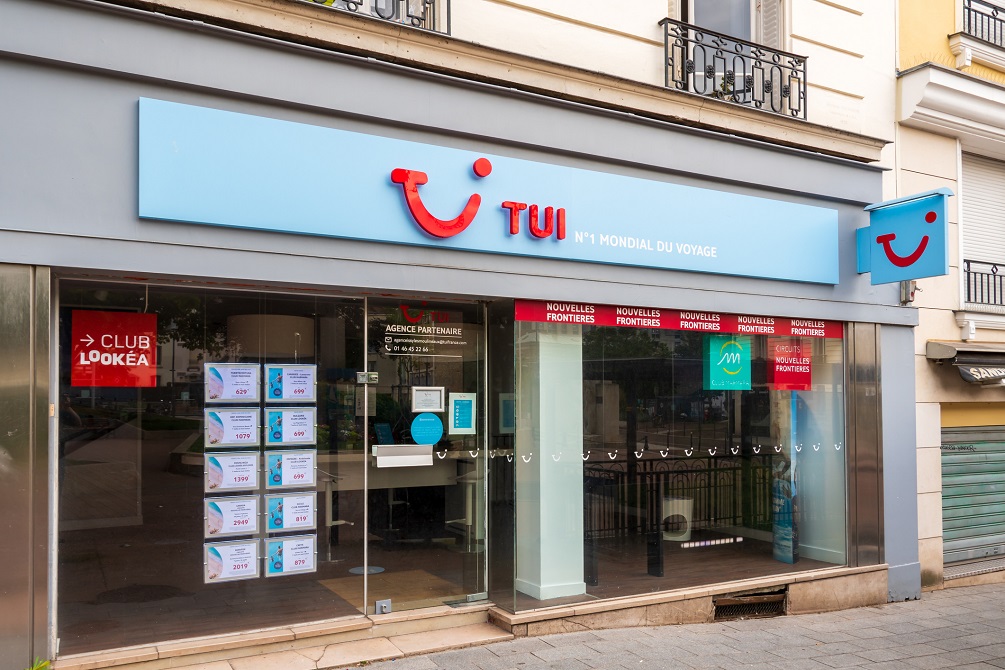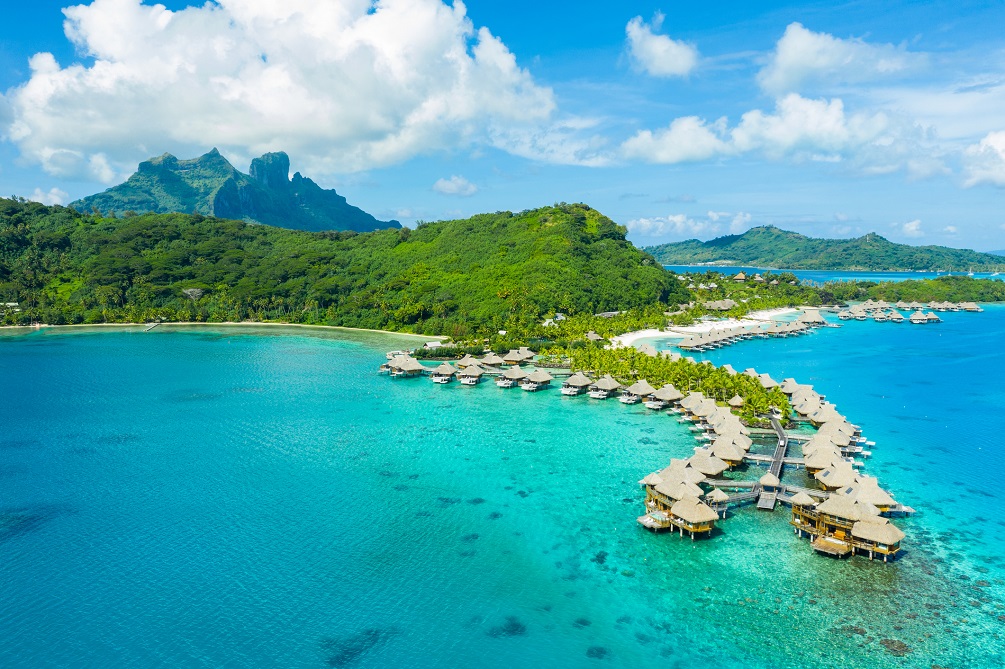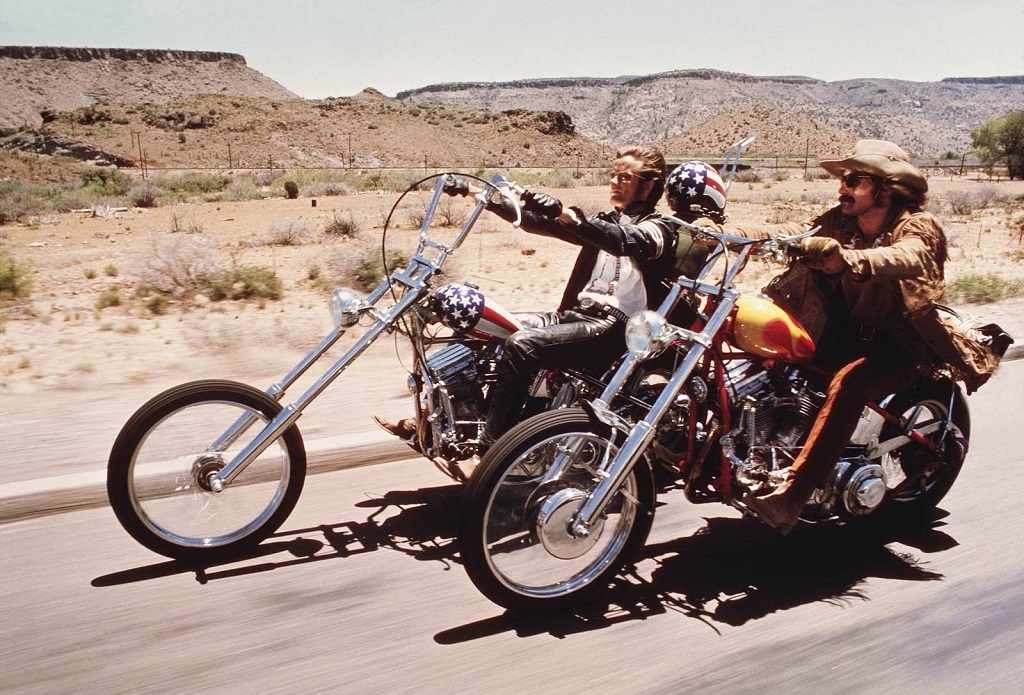Mexico
Travel to Mexico, a country loaded with historical landmarks, white sand beaches, aqua adventures and prolific ruins.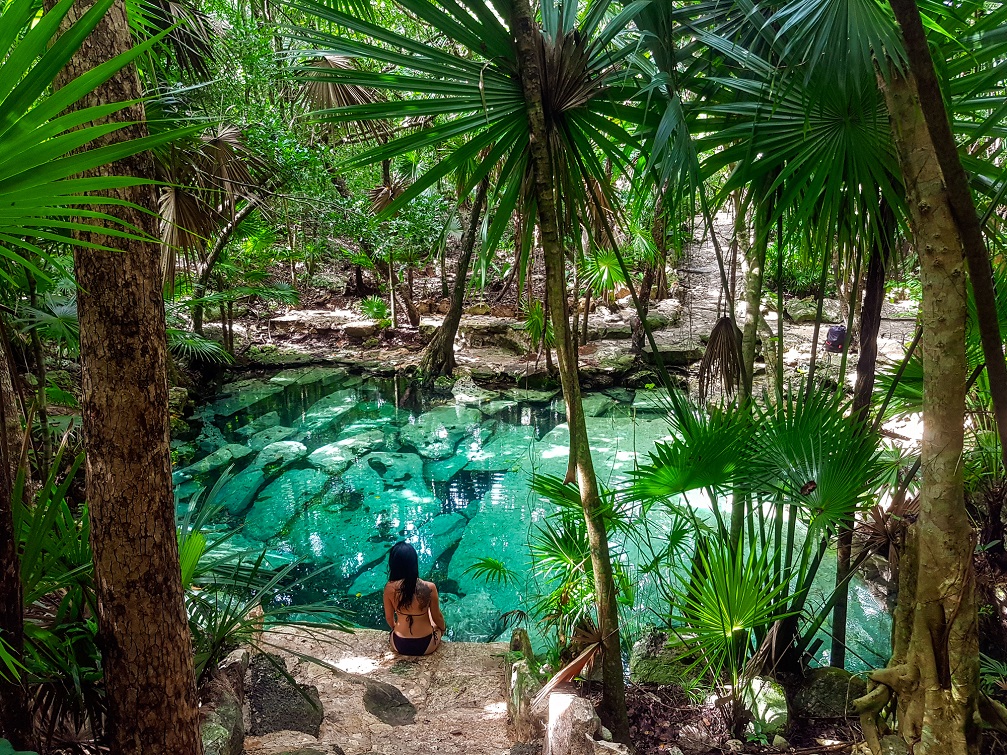
With stunning aqua-marine coasts, Mayan ruins, verdant jungles, exotic cuisine, and colonial cities, there’s a slew of trails to explore and experiences to absorb in Mexico.
If you’re looking for tourist places to visit in Mexico, begin with the Mayan Riviera, a cluster of resort beaches viz. Cancun, Cozumel island and Playa del Carmen. Located at the edge of the Yucatan Peninsula, it draws in millions of visitors each year. From snorkeling and scuba diving to dolphin swims and submerged sculptures, this area has a number of exciting adventures in store for you. It is also home to the epic Mayan ruins, with the spectacular Chichen Itza and Tulum located in close proximity.
For quieter moments, head to the beach coastal city of Puerto Vallarta. Then, make your way to Cabo San Lucas and San Jose del Cabo, which are known for their translucent waters, sports, and fishing. Don’t forget to catch a glimpse of the El Arco de Cabo San Lucas, a world-famous landmark.
Head further up North to Chihuahua state, and visit one of the country’s most famous attractions, the imposing Copper Canyon, which is actually bigger and greater in-depth than even the Grand Canyon. This area can be explored by bike, rail, or horseback, whichever you prefer.
For a city tour, drop by Mexico city, the capital of Mexico, which is chock full of museums, galleries, and world-class attractions. The center of the city is a UNESCO World Heritage Site. It is home to a fifteen square km stretch that houses around 1400 historic buildings dating back to the 16th century. Make your way through a host of popular landmarks like the Constitution Square, the Metropolitan Cathedral, the National Palace, and the Templo Mayor. Not to forget, do visit the volcanic mountainscapes of Popocatepeti and Iztaccihuatl, which stand over 5000 meters tall.
Guanajuato city is another UNESCO World Heritage site worth exploring. It has sublime attractions like the Jardin de la Union plaza, which houses the San Diego Church and the Juarez Theater. You’ll also come across a number of cafes, restaurants, fountains, gardens, tunnels, and art galleries.
For a dose of authentic Mexican culture, visit Guadalajara city. From scenic parks and ancient buildings to mariachi music and captivating Charreadas (a kind of rodeo), it offers travelers a festive ambiance with some great cuisine.
The “white city” of Merida, the capital of Yucatan, is also a fine area to cover. Its citizens take special pride in maintaining its tidiness and dressing in white. You’ll find traces of European influences in its architecture, plazas and city squares.
Want to get a real taste of Mexico? Detour to Oaxaca and the colonial Morelia, both UNESCO World Heritage Sites. While Oaxaca is a confluence of Spanish and Indian culture; Morelia houses around 200 historic buildings, along with plenty of cafes, shopping options, statues, gardens and fountains.
Rich in history, culture, colonial influences, vibrant festivities, stunning beaches and tropical jungles, Mexico is a destination that leaves an indelible imprint on your senses.
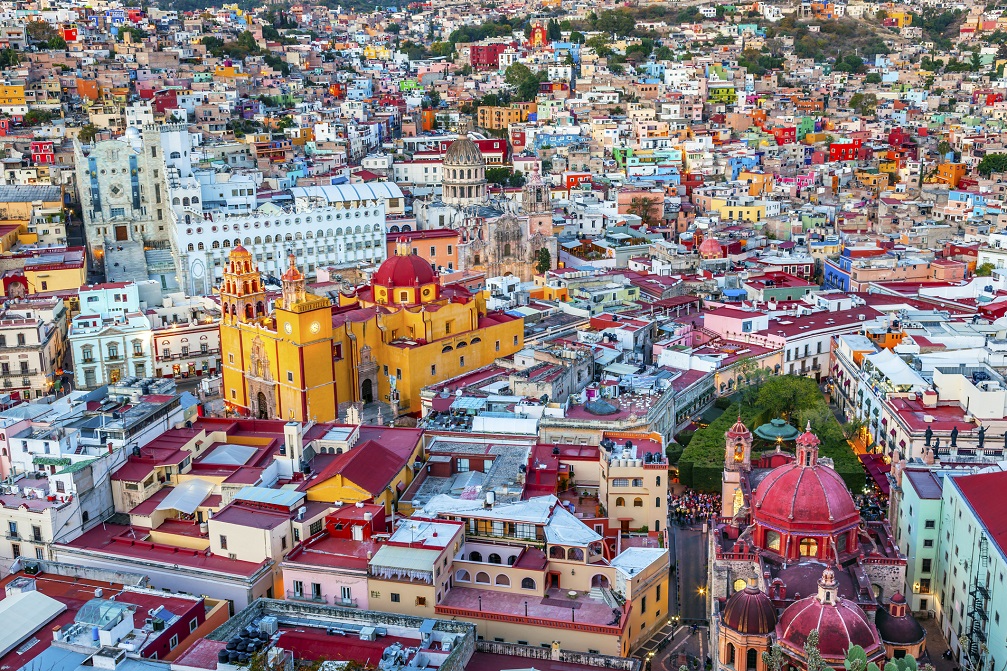


Mexico is located in southern North America. It is the third biggest country in Latin America and the eighth biggest country in the world.
It is bordered by the United States in the north and Guatemala and Belize to its South. Its most remarkable geographic highlight is the Baja California Peninsula, which is 775 miles long and is the world’s longest peninsula. It contains a number of mountain ranges, known as the Peninsular Ranges.
Its topography is somewhat extreme, with vast deserts in the north, lofty mountains and gaping canyons in the center of the country, and lush jungles in the east and south.
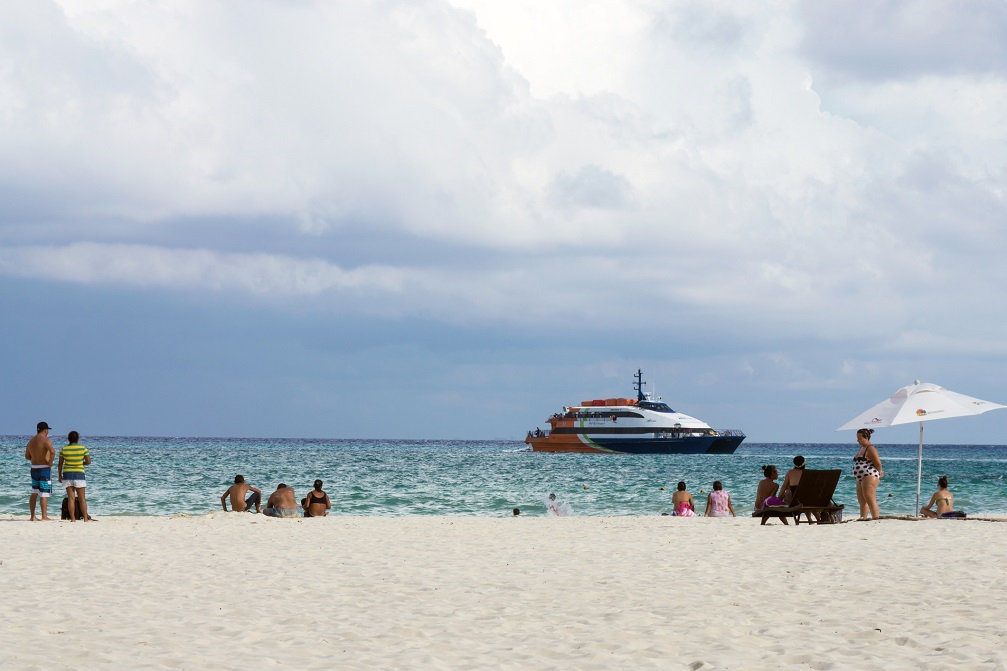


The climate in Mexico differs from region to region and season to season. The northern desert zone experiences extreme weather, with hot temperatures in summer and cool temperatures in winter. However, the tropical zone doesn’t experience these extremes. Instead, the temperature tends to stay put at 80 F all year through.
In the south, the temperature varies depending on the elevation. In the mountainous areas, you can glimpse snow at certain higher altitudes, all through the year.
The dry season typically starts from November and goes on until May, while the rainy season runs from June to October. You can expect temperatures from 50F to 90F in most areas of Mexico throughout the year.
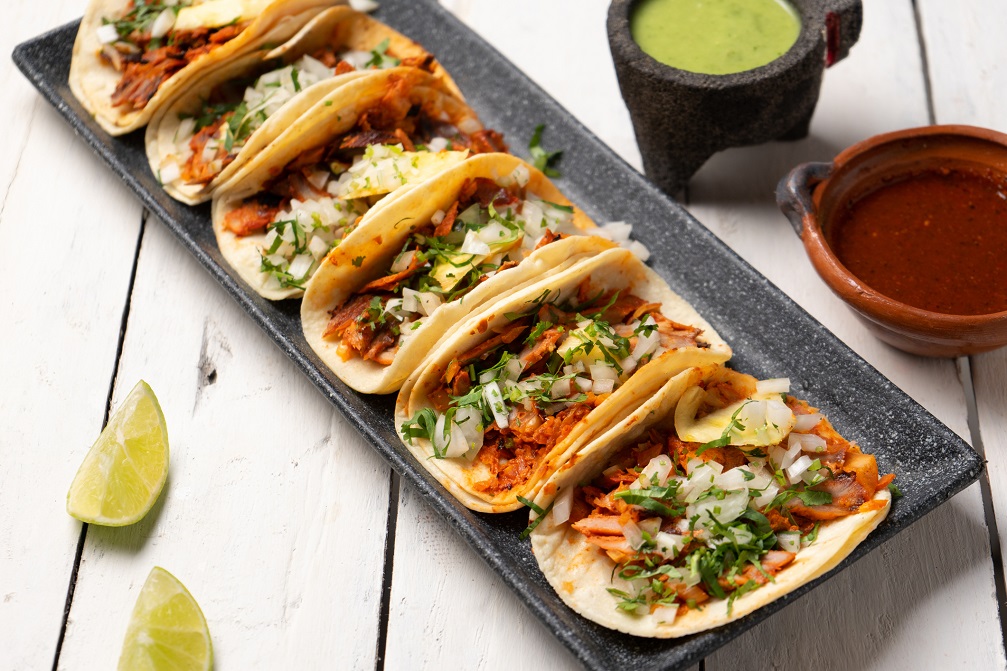


Mexico is a foodies delight. The cuisine is part of its rich culture and a source of pride for its people. Authentic Mexican food is so popular and acclaimed that it features on the UNESCO Intangible Cultural Heritage List.
Corn is the primary ingredient used in Mexican cuisine, along with other staples like beans and chili peppers. Sauces are an integral part of every meal and there are a variety of hot, sweet, and sour sauces.
While tacos are found everywhere, the toppings and fillings used differ from region to region. Sink your teeth into some local variations like ceviche, mole, and carnitas.
With bustling street joints, budget-friendly local eateries and Michelin-starred restaurants, you’re never short of options for a hearty meal.
An authentic Mexican taco is composed of two tortillas, filled with grilled meat, beans, fried prawns, or piquant chorizo. It is then garnished with cilantro and white onion and accompanied by salsas and hot sauces. You can’t leave without trying the historic ‘Taco El Pastor’, spit-roasted pork, served atop a corn tortilla, along with onions, coriander, and pineapple.
For breakfast, try Chilaquiles, which are created out of tortillas that are lightly fried, diced into pieces and served with a side of frijoles. Enchiladas are also an appetizing breakfast dish, but can be eaten any time of day.
The Mexicans have perfected the art of plating up patriotism in a dish called the Chiles en Nogada. The colours of the dish represent the Mexican flag. It is a lip-smacking combination of diced meat, spices and fruits, stuffed into Poblano chiles, sprinkled with white cream sauce and red pomegranate seeds.
Soup lovers should try the Pozole, a spicy soup created from hominy corn and stewed overnight with spices, herbs, pork, vegetables or chicken.
Looking for a quick pick-me-up? Tamales are a scrummy street dish you can try. Enveloped in banana leaves or corn husks, these piping hot pockets of corn dough are filled with a variety of chillies, meats, veggies and cheeses.
Guacamole accompanies plenty of Mexican dishes. Flavourful and spicy, it is a combination of mashed avocados, chili peppers, tomatoes, onions and lemon juice.
For dessert, try the churros, flan or marquesitas. Marquesitas are crepes that are grilled and filled with toppings like chocolate, nutella or cheese.
Food is perhaps one of Mexico’s most delectable features, and is a cultural fiesta of spice, herbs and sauce.



There are no strict rules about what to wear when you travel to Mexico. But, some areas are somewhat conservative. So you’ll have to dress taking that into consideration. When looking for places to visit in Mexico, take into account whether they are cities or rural interiors to make a decision on what to wear.
In cities like Mexico City, people are quite stylish and less conservative, while in the rural areas they may be a little more modest in dress.
Mexican women rarely wear shorts, but if you want to wear them, there’s nothing stopping you. If you’re visiting the beach carry T-shirts, Bermudas, long-sleeved loose shirts, cool or loose clothing, sandals, and a hat or sunglasses. The same goes for men.
Men and women should carry a light jacket or sweater since it gets cool early in the morning and late at night.
In cities like Mexico City, the temperatures tend to get cooler. Women can wear jeans, t-shirts and casual dresses, with a lightweight jacket. Men can get away with jeans, Bermuda or cargo shorts, t-shirts, and shirts.
There are some occasions or locations which may demand a dress code, like at religious functions, celebrations, and in certain restaurants and bars.
All said and done, Mexicans are pretty tolerant of travelers when it comes to attire.
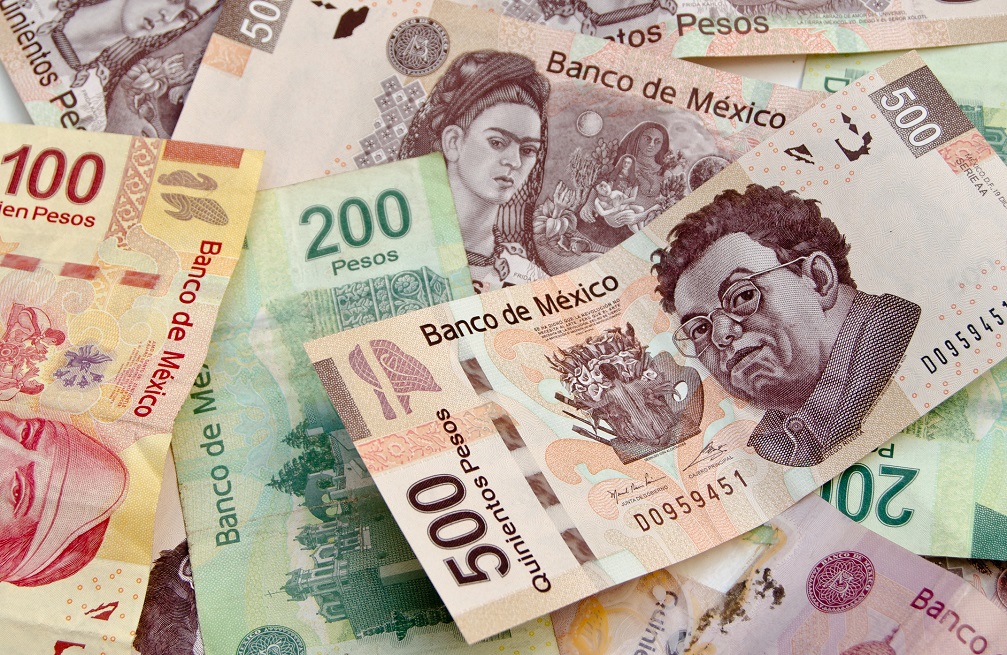


The local currency in Mexico is commonly called ‘Peso,’ a shorter monniker for its actual name, the Mexican Nuevo Peso.
At the time of writing this, 1 Pound sterling is equal to 28.61 Peso. Before you travel to Mexico, it is recommended that you check the exchange rates.
UK credit and debit cards are generally accepted for payment and can also be used in ATMs. You may not be able to exchange currency at hotels. However, you will be able to do so at some banks and exchange bureaus.
Exchanging US dollar travellers’ cheques and notes into Peso, is an easier proposition than exchanging Pound Sterling. You can use your credit or debit card at restaurants and hotels and save the cash for street food, local shopping and transport.
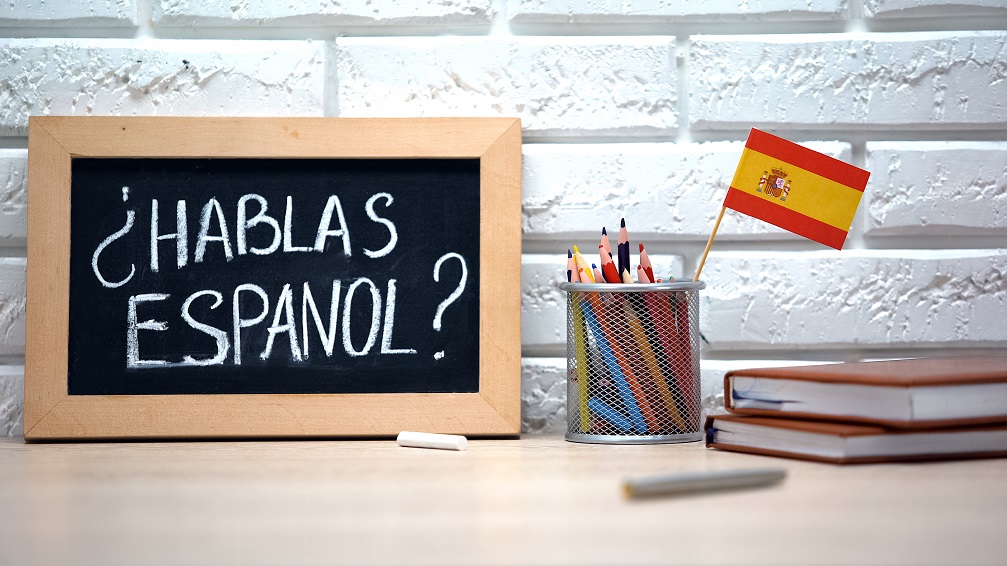


Spanish is the official language in Mexico and is widely spoken across the country. Since Mexico is a tourist country, there are tourist guides and workers who speak English. But in certain offbeat and remote areas, Spanish is the only language that is spoken.
While looking for places to visit in Mexico, you’d do well to acquaint yourself with some basic Spanish words and phrases to get your message across. Some of these are Buenos Dias (good morning); Buenas Noches (good night), Por Favor (please), and Gracias (thank you).
There are also several indigenous languages spoken in Mexico, even though these are spoken by isolated groups of people. The most common ones are Chontal Maya, spoken in the southern and north-central towns; Nahuatl and the Chol language, which is a Mayan derivation.
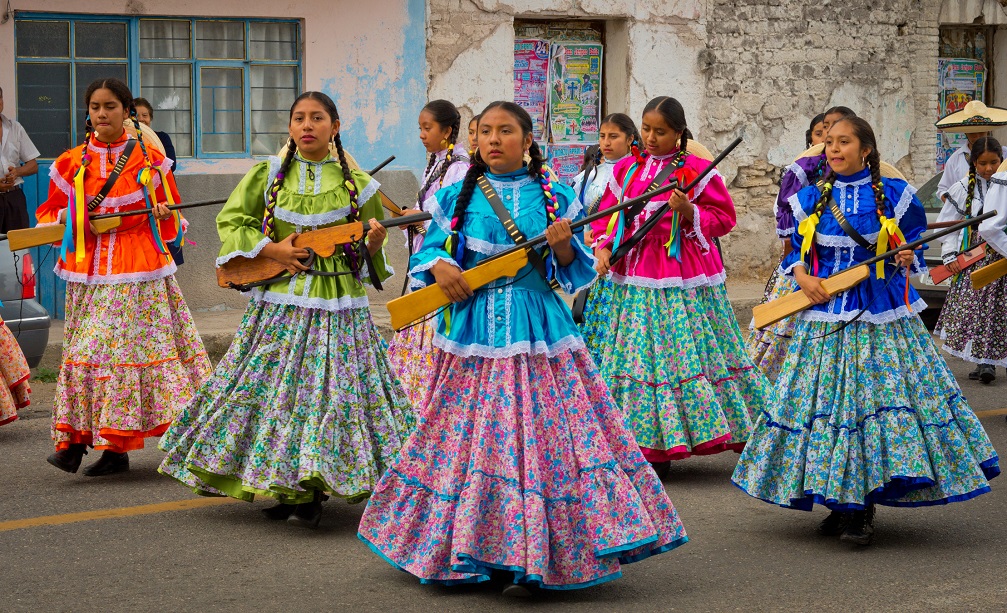


Mexico is known for its colorful celebrations filled with music, food, dance, and fireworks. Family values and friendship are ingrained in its culture. Mexicans take family responsibilities very seriously including those of their extended family members.
Hosting house parties is a part and parcel of Mexican life. The Mariachi style of folk music is commonly played across Mexico.
The Day of the Dead or Dia de Muertos, is an important occasion, which runs from October 31 until November 2nd. It is a time when families come together to commemorate their deceased relatives and loved ones with prayers, flowers, food, and stories.
The Pinata is a well-known Mexican tradition and is used as a fun game at parties. Alebrijes, which are brightly colored sculptures, form an iconic part of Mexican culture.
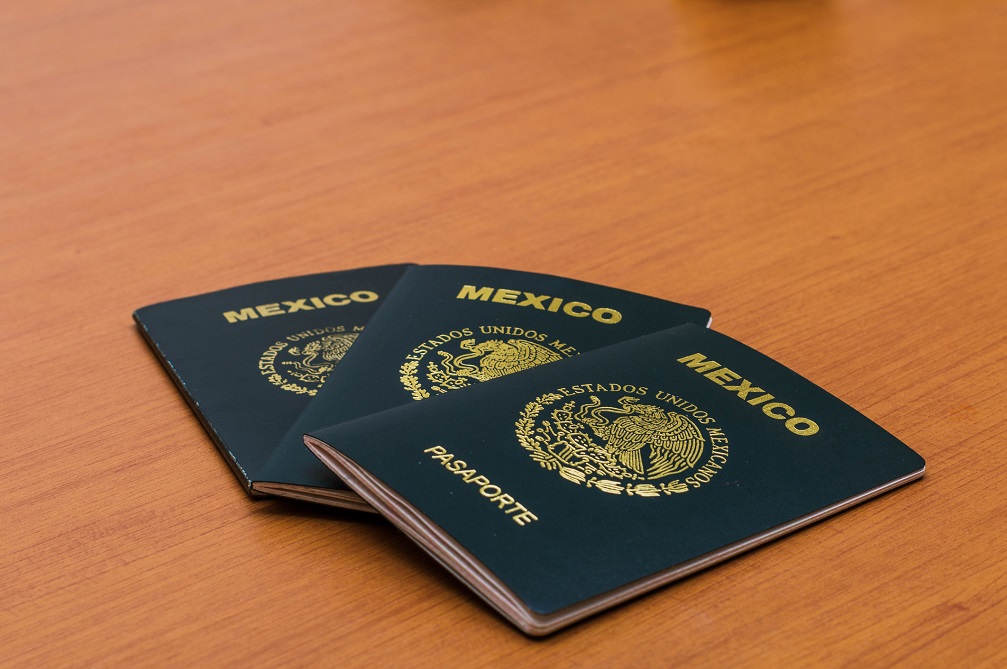


When you travel to Mexico, if you’re visiting as a tourist you won’t need a visa. But you must fill in an immigration form, and carry this with you to display on entry and exit from Mexico.
You can obtain a form on arrival at border crossings or on your flight to Mexico. Alternatively, you can get one online in advance from the National Institute of Immigration website. For the advance online option, your passport must be valid for at least 6 months from your proposed entry date to Mexico.
You will also require an immigration form to leave Mexico. In case of loss of immigration form, it can be replaced at any international airport in Mexico or even at the immigration office. It costs $500 Pesos, to replace the form. To avoid getting duped, make your way directly to the immigration office.
With a rich culture, long coastline, quaint cities, historical remains, tropical rainforests, and the most scrumptious cuisine, Mexico is a perfect harmony of the past and the present.
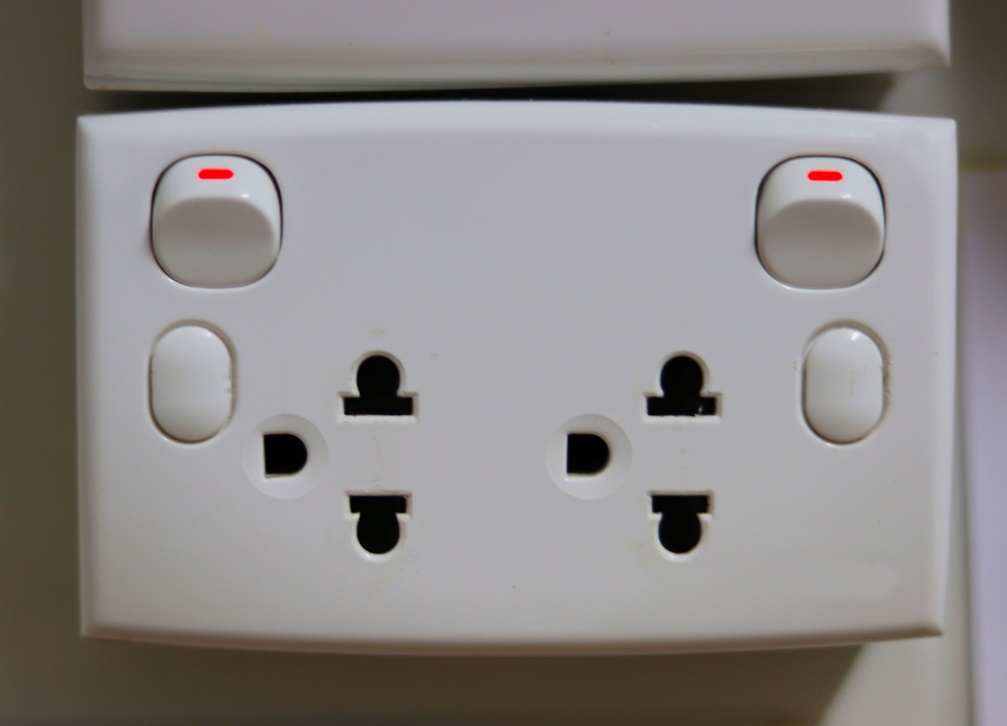


The standard voltage in Mexico is 127V, while the standard frequency is 60Hz.
The plugs and power sockets used here are types A & B. All your electrical equipment can be used in Mexico if your country’s voltage is between 100V and 240V. This is the case in the UK and hence you can use your electronics here, without stress.
To cross-check, read the small print on the equipment or power adapter to ascertain what voltages the device can handle. The adapter can work with all voltages if it has 100-240V 50/60 Hz printed on it.
Kindly note that power plug adapters will only convert plug types and not voltages.



With stunning aqua-marine coasts, Mayan ruins, verdant jungles, exotic cuisine, and colonial cities, there’s a slew of trails to explore and experiences to absorb in Mexico.
If you’re looking for tourist places to visit in Mexico, begin with the Mayan Riviera, a cluster of resort beaches viz. Cancun, Cozumel island and Playa del Carmen. Located at the edge of the Yucatan Peninsula, it draws in millions of visitors each year. From snorkeling and scuba diving to dolphin swims and submerged sculptures, this area has a number of exciting adventures in store for you. It is also home to the epic Mayan ruins, with the spectacular Chichen Itza and Tulum located in close proximity.
For quieter moments, head to the beach coastal city of Puerto Vallarta. Then, make your way to Cabo San Lucas and San Jose del Cabo, which are known for their translucent waters, sports, and fishing. Don’t forget to catch a glimpse of the El Arco de Cabo San Lucas, a world-famous landmark.
Head further up North to Chihuahua state, and visit one of the country’s most famous attractions, the imposing Copper Canyon, which is actually bigger and greater in-depth than even the Grand Canyon. This area can be explored by bike, rail, or horseback, whichever you prefer.
For a city tour, drop by Mexico city, the capital of Mexico, which is chock full of museums, galleries, and world-class attractions. The center of the city is a UNESCO World Heritage Site. It is home to a fifteen square km stretch that houses around 1400 historic buildings dating back to the 16th century. Make your way through a host of popular landmarks like the Constitution Square, the Metropolitan Cathedral, the National Palace, and the Templo Mayor. Not to forget, do visit the volcanic mountainscapes of Popocatepeti and Iztaccihuatl, which stand over 5000 meters tall.
Guanajuato city is another UNESCO World Heritage site worth exploring. It has sublime attractions like the Jardin de la Union plaza, which houses the San Diego Church and the Juarez Theater. You’ll also come across a number of cafes, restaurants, fountains, gardens, tunnels, and art galleries.
For a dose of authentic Mexican culture, visit Guadalajara city. From scenic parks and ancient buildings to mariachi music and captivating Charreadas (a kind of rodeo), it offers travelers a festive ambiance with some great cuisine.
The “white city” of Merida, the capital of Yucatan, is also a fine area to cover. Its citizens take special pride in maintaining its tidiness and dressing in white. You’ll find traces of European influences in its architecture, plazas and city squares.
Want to get a real taste of Mexico? Detour to Oaxaca and the colonial Morelia, both UNESCO World Heritage Sites. While Oaxaca is a confluence of Spanish and Indian culture; Morelia houses around 200 historic buildings, along with plenty of cafes, shopping options, statues, gardens and fountains.
Rich in history, culture, colonial influences, vibrant festivities, stunning beaches and tropical jungles, Mexico is a destination that leaves an indelible imprint on your senses.



Mexico is located in southern North America. It is the third biggest country in Latin America and the eighth biggest country in the world.
It is bordered by the United States in the north and Guatemala and Belize to its South. Its most remarkable geographic highlight is the Baja California Peninsula, which is 775 miles long and is the world’s longest peninsula. It contains a number of mountain ranges, known as the Peninsular Ranges.
Its topography is somewhat extreme, with vast deserts in the north, lofty mountains and gaping canyons in the center of the country, and lush jungles in the east and south.



The climate in Mexico differs from region to region and season to season. The northern desert zone experiences extreme weather, with hot temperatures in summer and cool temperatures in winter. However, the tropical zone doesn’t experience these extremes. Instead, the temperature tends to stay put at 80 F all year through.
In the south, the temperature varies depending on the elevation. In the mountainous areas, you can glimpse snow at certain higher altitudes, all through the year.
The dry season typically starts from November and goes on until May, while the rainy season runs from June to October. You can expect temperatures from 50F to 90F in most areas of Mexico throughout the year.



Mexico is a foodies delight. The cuisine is part of its rich culture and a source of pride for its people. Authentic Mexican food is so popular and acclaimed that it features on the UNESCO Intangible Cultural Heritage List.
Corn is the primary ingredient used in Mexican cuisine, along with other staples like beans and chili peppers. Sauces are an integral part of every meal and there are a variety of hot, sweet, and sour sauces.
While tacos are found everywhere, the toppings and fillings used differ from region to region. Sink your teeth into some local variations like ceviche, mole, and carnitas.
With bustling street joints, budget-friendly local eateries and Michelin-starred restaurants, you’re never short of options for a hearty meal.
An authentic Mexican taco is composed of two tortillas, filled with grilled meat, beans, fried prawns, or piquant chorizo. It is then garnished with cilantro and white onion and accompanied by salsas and hot sauces. You can’t leave without trying the historic ‘Taco El Pastor’, spit-roasted pork, served atop a corn tortilla, along with onions, coriander, and pineapple.
For breakfast, try Chilaquiles, which are created out of tortillas that are lightly fried, diced into pieces and served with a side of frijoles. Enchiladas are also an appetizing breakfast dish, but can be eaten any time of day.
The Mexicans have perfected the art of plating up patriotism in a dish called the Chiles en Nogada. The colours of the dish represent the Mexican flag. It is a lip-smacking combination of diced meat, spices and fruits, stuffed into Poblano chiles, sprinkled with white cream sauce and red pomegranate seeds.
Soup lovers should try the Pozole, a spicy soup created from hominy corn and stewed overnight with spices, herbs, pork, vegetables or chicken.
Looking for a quick pick-me-up? Tamales are a scrummy street dish you can try. Enveloped in banana leaves or corn husks, these piping hot pockets of corn dough are filled with a variety of chillies, meats, veggies and cheeses.
Guacamole accompanies plenty of Mexican dishes. Flavourful and spicy, it is a combination of mashed avocados, chili peppers, tomatoes, onions and lemon juice.
For dessert, try the churros, flan or marquesitas. Marquesitas are crepes that are grilled and filled with toppings like chocolate, nutella or cheese.
Food is perhaps one of Mexico’s most delectable features, and is a cultural fiesta of spice, herbs and sauce.



There are no strict rules about what to wear when you travel to Mexico. But, some areas are somewhat conservative. So you’ll have to dress taking that into consideration. When looking for places to visit in Mexico, take into account whether they are cities or rural interiors to make a decision on what to wear.
In cities like Mexico City, people are quite stylish and less conservative, while in the rural areas they may be a little more modest in dress.
Mexican women rarely wear shorts, but if you want to wear them, there’s nothing stopping you. If you’re visiting the beach carry T-shirts, Bermudas, long-sleeved loose shirts, cool or loose clothing, sandals, and a hat or sunglasses. The same goes for men.
Men and women should carry a light jacket or sweater since it gets cool early in the morning and late at night.
In cities like Mexico City, the temperatures tend to get cooler. Women can wear jeans, t-shirts and casual dresses, with a lightweight jacket. Men can get away with jeans, Bermuda or cargo shorts, t-shirts, and shirts.
There are some occasions or locations which may demand a dress code, like at religious functions, celebrations, and in certain restaurants and bars.
All said and done, Mexicans are pretty tolerant of travelers when it comes to attire.



The local currency in Mexico is commonly called ‘Peso,’ a shorter monniker for its actual name, the Mexican Nuevo Peso.
At the time of writing this, 1 Pound sterling is equal to 28.61 Peso. Before you travel to Mexico, it is recommended that you check the exchange rates.
UK credit and debit cards are generally accepted for payment and can also be used in ATMs. You may not be able to exchange currency at hotels. However, you will be able to do so at some banks and exchange bureaus.
Exchanging US dollar travellers’ cheques and notes into Peso, is an easier proposition than exchanging Pound Sterling. You can use your credit or debit card at restaurants and hotels and save the cash for street food, local shopping and transport.



Spanish is the official language in Mexico and is widely spoken across the country. Since Mexico is a tourist country, there are tourist guides and workers who speak English. But in certain offbeat and remote areas, Spanish is the only language that is spoken.
While looking for places to visit in Mexico, you’d do well to acquaint yourself with some basic Spanish words and phrases to get your message across. Some of these are Buenos Dias (good morning); Buenas Noches (good night), Por Favor (please), and Gracias (thank you).
There are also several indigenous languages spoken in Mexico, even though these are spoken by isolated groups of people. The most common ones are Chontal Maya, spoken in the southern and north-central towns; Nahuatl and the Chol language, which is a Mayan derivation.



Mexico is known for its colorful celebrations filled with music, food, dance, and fireworks. Family values and friendship are ingrained in its culture. Mexicans take family responsibilities very seriously including those of their extended family members.
Hosting house parties is a part and parcel of Mexican life. The Mariachi style of folk music is commonly played across Mexico.
The Day of the Dead or Dia de Muertos, is an important occasion, which runs from October 31 until November 2nd. It is a time when families come together to commemorate their deceased relatives and loved ones with prayers, flowers, food, and stories.
The Pinata is a well-known Mexican tradition and is used as a fun game at parties. Alebrijes, which are brightly colored sculptures, form an iconic part of Mexican culture.



When you travel to Mexico, if you’re visiting as a tourist you won’t need a visa. But you must fill in an immigration form, and carry this with you to display on entry and exit from Mexico.
You can obtain a form on arrival at border crossings or on your flight to Mexico. Alternatively, you can get one online in advance from the National Institute of Immigration website. For the advance online option, your passport must be valid for at least 6 months from your proposed entry date to Mexico.
You will also require an immigration form to leave Mexico. In case of loss of immigration form, it can be replaced at any international airport in Mexico or even at the immigration office. It costs $500 Pesos, to replace the form. To avoid getting duped, make your way directly to the immigration office.
With a rich culture, long coastline, quaint cities, historical remains, tropical rainforests, and the most scrumptious cuisine, Mexico is a perfect harmony of the past and the present.



The standard voltage in Mexico is 127V, while the standard frequency is 60Hz.
The plugs and power sockets used here are types A & B. All your electrical equipment can be used in Mexico if your country’s voltage is between 100V and 240V. This is the case in the UK and hence you can use your electronics here, without stress.
To cross-check, read the small print on the equipment or power adapter to ascertain what voltages the device can handle. The adapter can work with all voltages if it has 100-240V 50/60 Hz printed on it.
Kindly note that power plug adapters will only convert plug types and not voltages.
Travel related news, information and inspirational articles and videos for travellers booking flights or holidays to Mexico. Ask questions about travel in Mexico and get answers from Mexico experts
NEWS
Inspiration, Information and Travel Guides
MEET THE Mexico EXPERTS
If you are looking to book a holiday to Mexico or needs some help and advice planning travel to Mexico then contact one of the UK based independent travel agents that specialise in Mexico itineraries.
FEATURED VIDEOS
Your Travel Questions Answered
Ask any travel related question and get an answer from one of our experts that will provide you with an answer from their personal experience
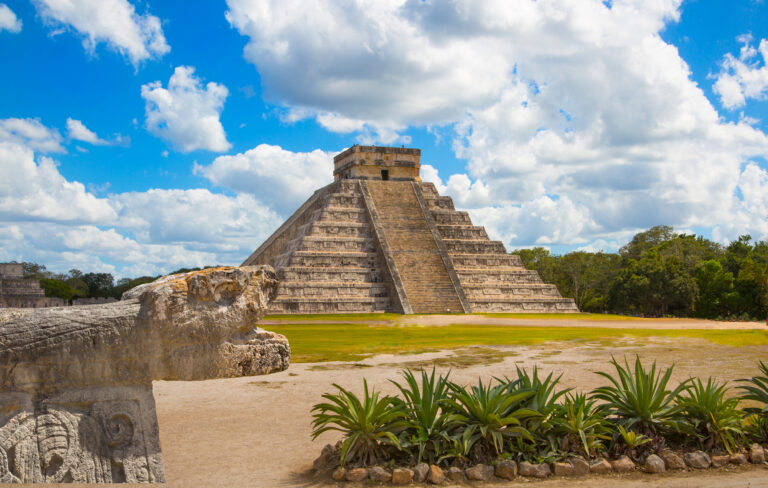

I am planning to spend the vacation in Mexico in December 2022. I have two kids, and I am confused about whether to visit Mexico or some other place. I am hoping that you could suggest to me some popular things to do in Mexico to book my tickets.
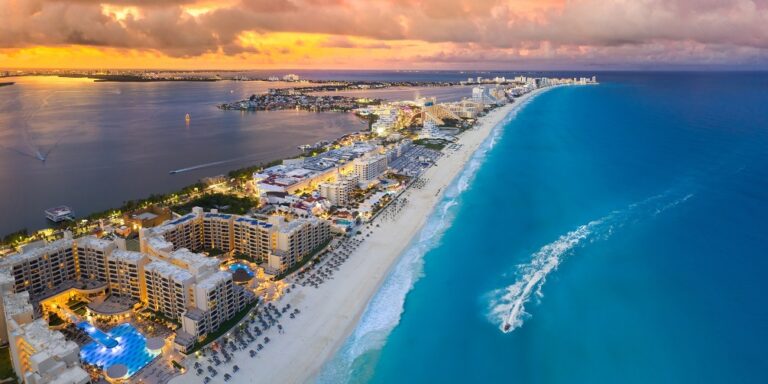

My next goal for a trip involves visiting the Yucatan peninsula. I know that there are several resorts in the area, so I would like to plan a trip of 7 days to see the sites and relax. What are the top attractions or activities in Cancun?






